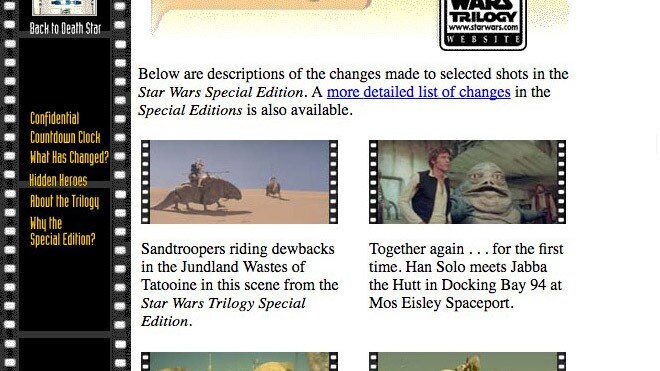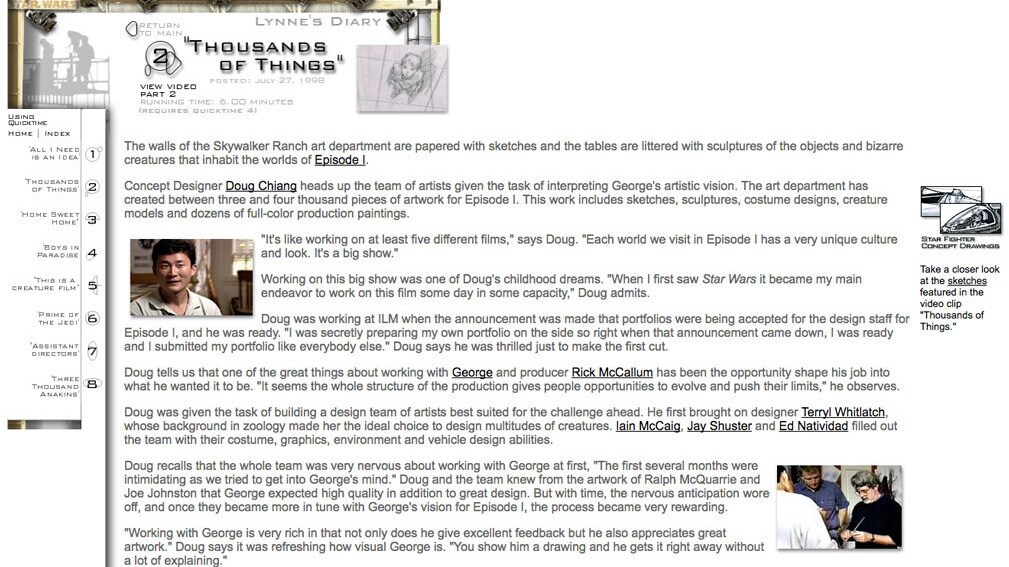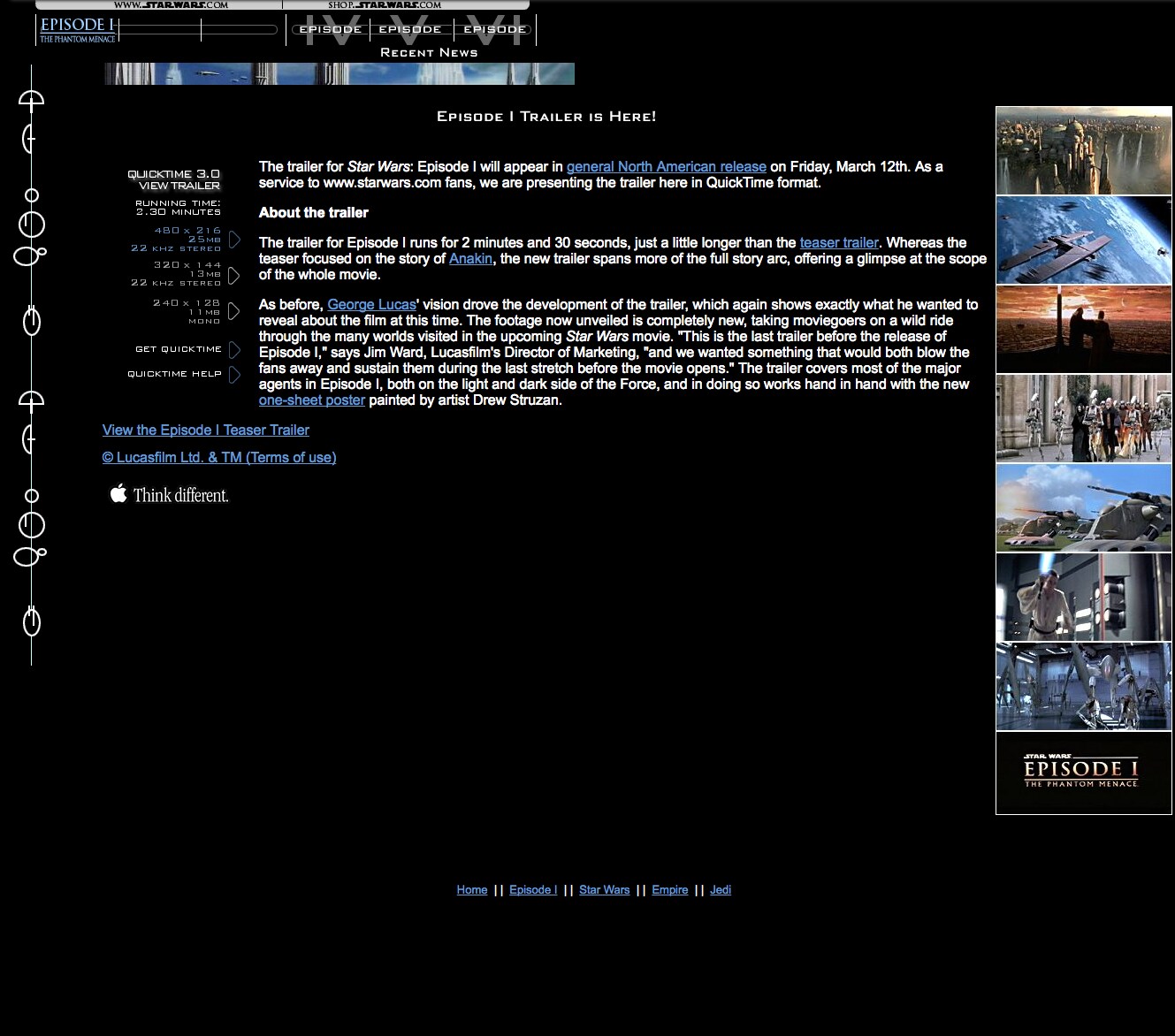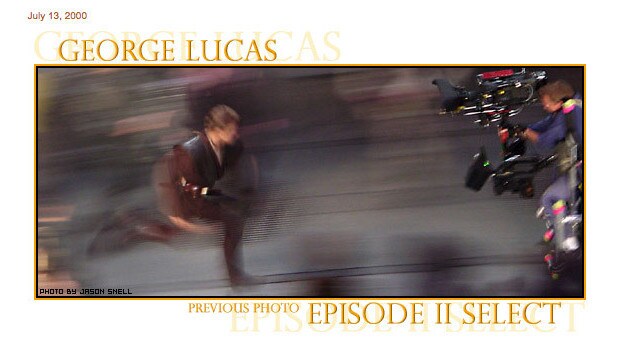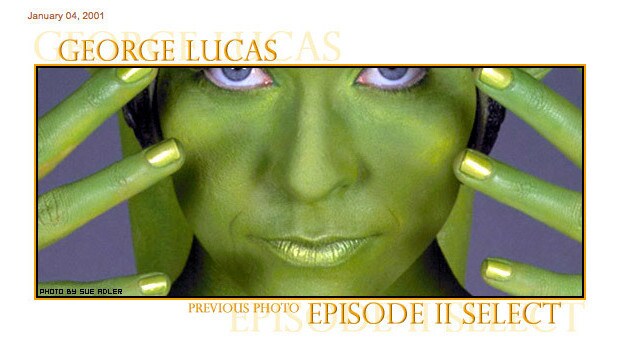In celebration of StarWars.com's 20th anniversary, members of Lucasfilm past and present tell its story.
November 26 will mark the 20th anniversary of StarWars.com. It’s somewhat hard to believe, considering the site originally launched in support of the Star Wars Trilogy Special Edition -- itself a celebration of Star Wars’ same milestone. Over the years, StarWars.com has evolved in terms of content, size, and features. As the Internet changed, so has the StarWars.com team’s digital offerings. Staff members have moved on to become authors and work on Lucasfilm’s movies. Through it all, the site has remained a constant, delivering Star Wars content every day.
The story of StarWars.com is one of risk, failures, frustrations, huge successes, and innovation. (And Jawa garden gnomes.) In honor of our 20th anniversary, StarWars.com spoke to many of the people who contributed to the site over the years, and let them tell the story in their own words. Turns out, it’s a saga all its own.
The only official online Star Wars destination up until 1996 was on Twentieth Century Fox’s website. With the theatrical release of the Star Wars Trilogy Special Edition planned for January 1997 -- which was considered a big, almost reckless risk by many internally -- and George Lucas beginning production on the Star Wars prequels, Lucasfilm decided to create its own Star Wars website: StarWars.com. It would complement this new era of activity and provide an outlet to message directly to fans. The idea for the site came directly from Lucas himself.
Lynne Hale (director of publicity, 1986-): George has always been very conscious about the fans. He sent [advertising publicity supervisor] Charlie Lippincott to fan conventions before A New Hope came out, because he was the one that understood, intrinsically, the relationship with the fans -- even before they were fans. George was very interested in having a direct communication with the fans.
Steve Sansweet (director of content management and later head of fan relations, 1996-2011): It was in 1995 when Lynne called me at the Wall Street Journal and asked if I knew of anybody who might be interested in a one-year-only job to go out and talk about the Special Editions at fan conventions. And, frankly, at that point I had been bureau chief in Los Angeles for the Journal for many, many years beyond the normal period of time. They were looking for me to do a different job [at the Journal] and I wasn’t interested, and I said [to Lynne], “Well, let’s talk,” and one thing led to another, and I joined Lucasfilm for a guaranteed one-year-only job. Which they then forgot to get rid of me for the next 15.
I started by working out of my house; I was still working on the Star Wars Encyclopedia, and then going out and doing conventions nearly every weekend all over the US, especially in the summer period. As the fall approached, I knew they were working with Fox on getting a separate website launched. I mean, 1996 was the dawn of the Internet, really, for commercial use, and certainly for fan use, and things of that nature. So there were a lot of scattered things happening all over the place. Nobody had any idea what the impact would be, but the big companies were sure that they needed some kind of presence.
My recollection is hearing that it was George’s idea, and George was always pushing things and saying we need to control it. Fox certainly had an early website and they would put up their own photos and their own copy, but I was hired because Lucasfilm clearly wanted to control the message.
Jim Ward (senior VP, marketing, distribution, and online, 1997-2008): The initial focus was, “Hey, come on board and let's launch Star Wars.” The thing that really got me excited about George’s point of view was that he recognized that he was sitting on brands in Star Wars and Indiana Jones that were truly global brands, and it wasn’t just a movie. It was everything around the brand, and he wanted that brand to be curated and managed over the long term.
So that was very exciting, and as I came on aboard, obviously it was sort of the genesis of the Internet age, and one of the issues always was, how do we tap into a movement of fans that currently exist and create new fans with the prequels? How do we do that? And since George was self-investing, and we were building the infrastructure to do it, how could we mobilize that movement in the most efficient and economic way possible? The traditional studio model at the time was to go out and spend a lot of money on television and print, the traditional media mix, and do traditional PR, as well, to mobilize that fan base. And with the advent of this thing called the Internet, we thought there might be a more interesting way to do that, or a more complementary way to do that. This idea of creating the first, really, studio movie site that wasn’t just promoting a particular movie, but a brand -- and thus, StarWars.com -- was born.
Lynne Hale: I just think that George was always three steps ahead of everybody. Whether it was the tech department, in education, or on the website. He believed in digital technology and knew it was the future.
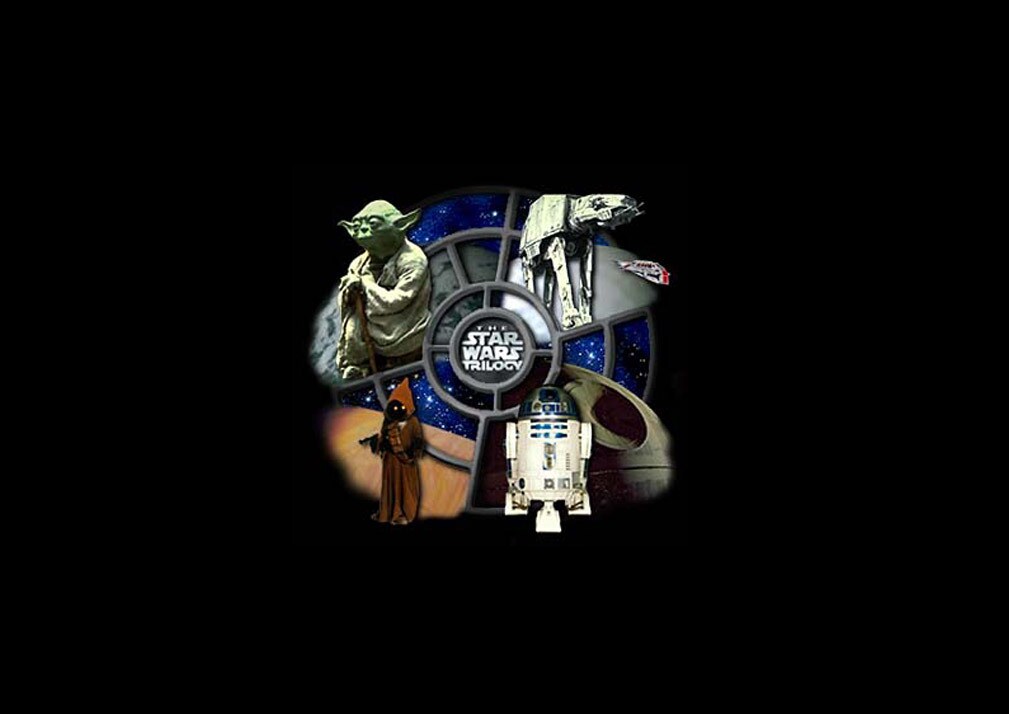
StarWars.com would officially launch on November 26, 1996. The site was sparse at the time, featuring information about the original trilogy, fun facts, descriptions of planets and characters, and printout coloring pages for kids. Welcoming copy read, “We’re starting out modestly, just as George Lucas did 20 years ago with a relatively low-budget space fantasy called Star Wars: A New Hope. Just as Star Wars grew, or rather exploded, in the public consciousness, this web site will continue to grow and change. And like the films, our aim is to inform, entertain, surprise, and amuse you. We’ll all have some fun, and we promise to provide the most up-to-date information (and shoot down inaccurate rumors) on the Star Wars universe.”
Steve Sansweet: I, very specifically, can picture that day. I think Lynne was responsible, with Fox, for coming up with copy. It was a November day in 1996. I was up at the Ranch. It was in the office of the president, Gordon Radley, and we were looking at the computer screen and reading one last time before [says dramatically] the button was pushed. [Laughs] It was Gordon, Lynne, me, and our company lawyer, and it was like there was a little bit of nervousness, a little bit of excitement. It was like primping the baby for his or her first trip into the public. Once it was launched you couldn’t take it back. It was basically, “This is StarWars.com and this is what the Special Editions are about.”
Jim Ward: Because it was so new, it was controversial. It was controversial in a number of ways. How open and transparent should we be in an age where people have this kind of access? How open should we be? And there were contingents in the company that wanted to be very, very guarded -- clearly with the storyline, but I mean guarded with the assets. Putting the photography online and "My God, what are they going to do with our IP, and people are going to steal things," and all of that. There were issues around having other fan sites like TheForce.net, and what is their role, and what do they do, and what do we do with them in the use of content, and where do we draw those boundaries?
Marc Hedlund (director of Internet development and later general manager, Lucas Online, 1997-1999): They gave me business cards when I arrived, and the business cards actually said on them “Director of the Internet,” which I thought was hilarious. [Laughs] I was like, "Look, I know you guys are Lucasfilm, but I can't do this. I can't run the whole Internet!" [Laughs] I asked someone to change that. I forget what it was changed to. Something like, “Director of Internet Development.”
Steve Sansweet: Marc really sort of took over the whole thing and I was still there as the intermediary, but [content writer] David [West Reynolds] and Marc worked closer together.
Marc Hedlund: I think I was just this weird offshoot, and they put me in the stable house on Skywalker Ranch, which was where a lot of the weird offshoots were. I think the educational foundation was there, and I was there, and HR was there. It was this grab bag of strange things. I wound up starting around the same time as this guy that was hired by Rick McCallum, the producer. He had hired this documentary filmmaker [Jonathan Shenk] to do behind-the-scenes video of Episode I development. He and I were about the same age, and we hit it off right away and became sort of the punks of Lucasfilm.
Jim Ward: I came on board in 1997. The site was up at that point in time, but it was pretty static, and I remember literally within about two weeks of my coming on board, I flew to London to meet with George. One of the big questions was, “What do we do with this thing?” I met with George at lunch and went through this presentation of what do we do with the website and where do we take it from here, and it was great. Of course, he had a million ideas, and I had naive ideas coming from the outside, but that always helped, too. He always said, “Jim, in your naivety, you're going to ask the questions that everyone else thinks they have the answers to, and that’s how we’re going to change things up.”
Steve Sansweet: You have to remember, in the very beginning we were updating maybe once a week. It was frustrating as all get out. All of the copy had to be written. I would look it over, edit it, and then for the first couple of weeks Jim wanted to see everything. He would look at it, then it had to get sent over to [president] Gordon Radley. That happened for six months. Gordon had to get it in a printout form and he would edit it, make changes in red pencil. [Laughs] When you look at it now and what digital communications has become... I mean, even back then it seemed sort of silly, but Gordon wanted to make sure the message was right and these kids weren’t doing anything [wrong]. He was protective of George and the brand and the Special Editions were a real gamble. It was something that George wanted to do for the 20th anniversary, and at the beginning nobody really knew if the money being spent was worth it. And then, of course, the Special Editions just blew everybody’s minds and expectations were blown out of the water.
They had to push back the Jedi release by one week, because Star Wars and Empire were still up in the theaters and playing strongly. So all this was good for the beginning of StarWars.com. Of course, the prequels were coming closer and closer, so this is why it was all part of one package. We start it now, we start it slow, we’ve got some time, and we build up to the prequels.
Jim Ward: It was the Wild West. It was the dawn of a new age and we were doing stuff that no one had done before. We kind of had to figure it out as we were going in real time.
In support of the Special Editions, which marked the 20th anniversary of Star Wars and included new digital effects, StarWars.com added sections called “What Has Changed?” and “Why the Special Edition?” “What Has Changed?” featured a breakdown of the additions and alterations made to the films, while “Why the Special Edition?” explained the reasoning behind the rerelease. On August 11, 1997, Anatomy of a Dewback, a five-part behind-the-scenes featurette on the making of digital dewbacks for the A New Hope Special Edition, would be released on the site. As the Special Editions wound down, the focus turned to Episode I. Lynne’s Diaries -- an 11-part documentary series on the making of Episode I, hosted by Lynne Hale -- was made specifically for StarWars.com, and premiered on June 22, 1998. Along with Anatomy of a Dewback, it stands as one of the first made-for-Web documentaries by a movie studio.



